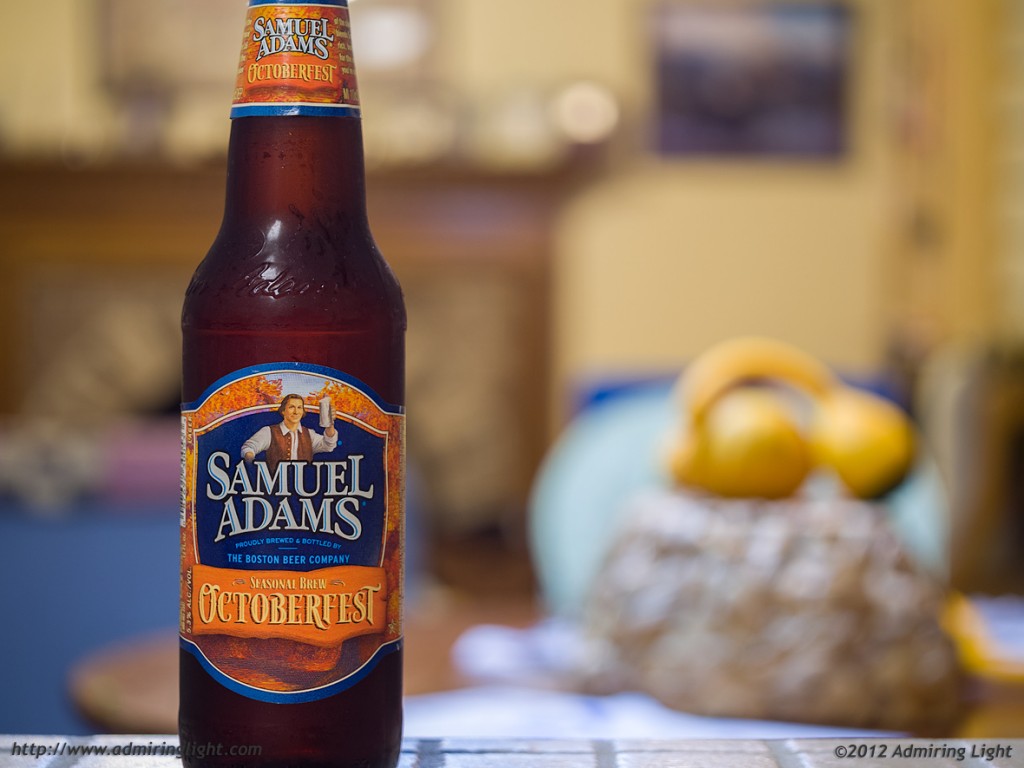
A few days ago, I compared the new Olympus 60mm f/2.8 against the venerable Leica 45mm f/2.8 to see how they stacked up in the macro and close focus arena when stopped down. Today I’m going to look at another characteristic: Wide open performance and bokeh. These are important because macro lenses often pull double duty as portrait lenses due to their focal length and relatively high optical quality.
So I did two tests – one real world, one controlled. First, I coaxed my daughter into sitting for me to test how they fare in an outdoor portrait. While she agreed, she was pretty impatient and decided that she didn’t want to smile for the pictures. I shot both lenses wide open at f/2.8 to maximize subject separation. I took about 5-6 shots with each lens with similar framing (though in the move closer with the 45, the angle changed a bit, so comparing background is harder to do here. I did notice a substantial sharpness advantage to the 60mm, but due to the handheld nature of the shooting, and the reliance on autofocus, I won’t post those crops here as anything conclusive. Use the shots below to judge skin tones, drawing style, etc. To be honest, with the exception of the slight sharpness advantage to the 60, they look awfully similar.


The Leica renders greens slightly warmer, and, perhaps a bit smoother in tonal transition. Otherwise, there’s not a lot of difference. Bokeh looks very similar here.
So, to test and make sure that the sharpness advantage I saw earlier wasn’t simply due to small differences in focusing (even though it was present in all shots), I did a more controlled test. At first, I did this shot handheld with IS and multiple tries, but decided that really wasn’t the way to go, so I re-shot the test on my tripod, with 2 second self time and IS off to ensure there wasn’t any shake involved.
I shot both lenses at f/2.8 and framed the beer bottle identically, moving the camera forward for the 45mm. I placed the bottle off center, as the eyes of a portrait are much closer to this position in the frame most of the time when shooting portraits. In RAW development, the files were processed identically – same white balance, and any minor adjustments were synced between the images. The results are below. Click on images for a larger size, and to compare out of focus rendering.


As you can see in the above images, the look of out of focus renderings is very neutral for both lenses. The Olympus has a blurrier background as expected, given its longer focal length (and therefore larger absolute aperture opening). Both produce smooth, even specular highlights and a pretty creamy look overall.
The Olympus has a little punchier color and a little higher contrast on the focus area, which may or may not be advantageous in a portrait setting, depending on your taste (as noted in the real world example). Overall, I slightly prefer the Olympus image due to those factors, but you are free to make your own opinion.
So, how about that wide open sharpness away from the center of the frame? Well, these tests definitely confirmed what I saw in my real world test. At portrait distances wide open, the Olympus is significantly sharper. At first I thought maybe my Leica was acting funny. I even retested with manual focus at 14x with the same results. I then went over to LensTip to see how their resolution chart testing with the Leica 45mm jived with what I was seeing. And, well, it confirmed it. While the Leica 45mm is exceptionally sharp in the image center wide open, that sharpness falls off somewhat quickly, leading to a softer image on the sides of the image. Click below to see 100% crops of the focus area. As you can see, the Olympus 60mm is significantly sharper at this distance and aperture off-center.

Well, in my opinion, the Olympus 60mm wins this battle handily. So where does that put us? Well, it certainly adds information. In my testing, with the two copies of the lens I own, the Olympus 60mm is the superior optic from a resolution standpoint, and I like the higher contrast wide open as well. Stopped down, they are much closer than they are wide open. For me, the 60mm is the lens to have, especially since it is $250 cheaper than the Leica 45mm.
That said, there is still definitely a market for the Leica 45. It is also an excellent lens, and it may make a lot more sense for those shooters who are using Panasonic bodies, as the 45mm has built in optical image stabilization. This can be a pretty big deal when shooting macro, and is certainly a big plus for the 45mm. It is also a shorter lens, and so it makes the overall package a little smaller to carry. Ultimately, the OIS and the desired focal length for your shooting should be the primary concerns when choosing between these two lenses. If you shoot with a body like the Olympus E-M5, however, and you don’t have a focal length preference, then save your money and get the better lens optically in the 60mm f/2.8.





Leave a Reply